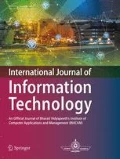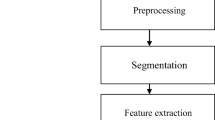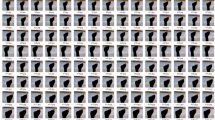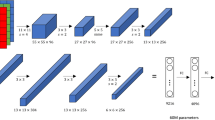Abstract
A sign language recognition system is an attempt to help the speech and the hearing-impaired community. The biggest challenge is to recognize a sign accurately. This can be achieved by training the computers to identify the signs. The accuracy depends on the methods used for classification and prediction which is achieved through machine learning. This research proposes the recognition of American Sign Language by using Support Vector Machine (SVM) and Convolutional Neural Network (CNN). In this work we have also calculated optimal filter size for single and double layer Convolutional Neural Network. In the first phase features from the dataset are extracted. After applying various preprocessing techniques, Support Vector Machine with four different kernels i.e., ‘poly’, ‘linear’, ‘rbf’ and ‘sigmoid’ and Convolutional Neural Networks with single and double layer are applied on training dataset to train the model. Finally, accuracy is calculated and compared for both the techniques. In CNN filters of different sizes have been used and optimal filter size has been found. The experimental results establish that the double layer Convolutional Neural Network achieve an accuracy of 98.58%. Optimal filter size is found out to be 8 × 8 for both single and double layer Convolutional Neural Network. From the experimental results we conclude that accuracy of CNN model can be improved by altering the filter size. This also helps in CNN to learn optimum values for variable sized parameters and tuning of different hyper parameters.
















Similar content being viewed by others
References
Cheok MJ, Omar Z, Jaward MH (2019) A review of hand gesture and sign language recognition techniques. Int J Mach Learn Cybern 10(1):131–153
Gu Y, Liu T, Jia X, Benediktsson JA, Chanussot J (2016) Nonlinear multiple kernel learning with multiple-structure-element extended morphological profiles for hyperspectral image classification. IEEE Trans Geosci Remote Sens 54(6):3235–3247
Bellugi U, Fischer S (1972) A comparison of sign language and spoken language. Cognition 1:173–200
Yang R, Sarkar S, Loeding B (2010) Handling movement epenthesis and hand segmentation ambiguities in continuous sign language recognition using nested dynamic programming. IEEE Trans Pattern Anal Mach Intell 32:462–477
Wu Y, Huang TS (1999) Human hand modeling, analysis and animation in the context of HCI. In: Image processing, ICIP 99. Proceedings. 1999 international conference, IEEE, pp 6–10
Wu Y, Huang TS (1999) Vision-based gesture recognition: a review. In: International gesture workshop, Springer, pp 103–115
Lockton R (2002) Hand gesture recognition using computer vision 4th year project report, pp 1–69
Starner TE (1995) Visual recognition of American sign language using hidden Markov models. Dept of Brain and Cognitive Sciences, Massachusetts Inst of Tech, Cambridge
Rautaray SS, Agrawal A (2015) Vision based hand gesture recognition for human computer interaction: a survey. Artif Intell Rev 43:1–54
Rautaray SS, Agrawal A (2015) Vision based hand gesture recognition for human computer interaction: a survey. Artif Intell Rev 43(1):1–54
Chen Q, Georganas ND, Petriu EM (2007). Real-time vision-based hand gesture recognition using haar-like features. In: 2007 IEEE instrumentation and measurement technology conference IMTC 2007, pp 1–6
Jia Y, Shelhamer E, Donahue J, Karayev S, Long J, Girshick R et al (2014) Caffe: convolutional architecture for fast feature embedding. In: Proceedings of the 22nd ACM international conference on Multimedia, pp 675–678
Starner T, Weaver J, Pentland A (1998) Real-time American sign language recognition using desk and wearable computer-based video. IEEE Trans Pattern Anal Mach Intell 20:1371–1375
Grobel K, Assan M (1997) Isolated sign language recognition using hidden Markov models. In: Systems, man, and cybernetics, 1997. Computational cybernetics and simulation. 1997 IEEE international conference, IEEE, pp 162–167
Vogler C, Metaxas D (1998) ASL recognition based on a coupling between HMMs and 3D motion analysis. In: Computer vision, 1998. Sixth international conference, IEEE, pp 363–369
Vogler C, Metaxas D (1997) Adapting hidden Markov models for ASL recognition by using three-dimensional computer vision methods. In: Systems, man, and cybernetics, computational cybernetics and simulation. 1997 IEEE international conference, IEEE, pp 156–161
Ahuja R, Jain D, Sachdeva D, Garg A, Rajput C (2019) Convolutional neural network based American sign language static hand gesture recognition. Int J Ambient Comput Intell IJACI 10(3):60–73
Ko SK, Kim CJ, Jung H, Cho C (2019) Neural sign language translation based on human keypoint estimation. Appl Sci 9(13):2683
Koller O, Camgoz C, Ney H, Bowden R (2019) Weakly supervised learning with multi-stream CNN-LSTM-HMMs to discover sequential parallelism in sign language videos. IEEE Trans Pattern Mach Intell 42:2306–2320
Wang H, Chai X, Chen X (2019) A novel sign language recognition framework using hierarchical Grassmann covariance matrix. IEEE Trans Multimed 21:2806–2814
Mittal A, Kumar P, Roy PP, Balasubramanian R, Chaudhuri BB (2019) A modified-LSTM model for continuous sign language recognition using leap motion. IEEE Sens J 19:7056–7063
Masood S, Thuwal HC, Srivastava A (2018) American sign language character recognition using convolution neural network. In: Satapathy S, Bhateja V, Das S (eds) Smart computing and informatics. Smart innovation, systems and technologie, vol 78. Springer, Singapore
Trigueiros P, Ribeiro F, Reis LP (2014) Vision-based Portuguese sign language recognition system. In: New perspectives in information systems and technologies, vol 1, pp 605–617. Springer International Publishing
Tavari NV, Deorankar AV (2014) Indian sign language recognition based on histograms of oriented gradient. Int J Comput Sci Inf Technol 5:3657–3660
Hasan H, Abdul-Kareem S (2014) Static hand gesture recognition using neural networks. Artif Intell Rev 41(2):147–181
Pigou L, Dieleman S, Kindermans PJ, Schrauwen B (2014) Sign language recognition using convolutional neural networks. In: Workshop at the European conference on computer vision 2014, pp 572–578. Springer International Publishing
Gupta B, Shukla P, Mittal A (2016) K-nearest correlated neighbor classification for Indian sign language gesture recognition using feature fusion. In: 2016 International conference on computer communication and informatics (ICCCI), pp 1–5
Nagarajan S, Subashini TS (2013) Static hand gesture recognition for sign language alphabets using edge-oriented histogram and multi class SVM. Int J Comput Appl 82(4):28–35
Singh K, Kumar S, Kaur P (2019) Support vector machine classifier based detection of fungal rust disease in Pea Plant (Pisam sativam). Int J Inf Technol 11:485–492. https://doi.org/10.1007/s41870-018-0134-z
Solanki A, Pandey S (2019) Music instrument recognition using deep convolutional neural networks. Int J Inf Technol. https://doi.org/10.1007/s41870-019-00285-y
Kaggle (2017) Sign language MNIST: drop-in replacement for MNIST for hand gesture recognition tasks. https://www.kaggle.com/datamunge/sign-language-mnist. Accessed Jan 2018
Author information
Authors and Affiliations
Corresponding author
Rights and permissions
About this article
Cite this article
Jain, V., Jain, A., Chauhan, A. et al. American Sign Language recognition using Support Vector Machine and Convolutional Neural Network. Int. j. inf. tecnol. 13, 1193–1200 (2021). https://doi.org/10.1007/s41870-021-00617-x
Received:
Accepted:
Published:
Issue Date:
DOI: https://doi.org/10.1007/s41870-021-00617-x




